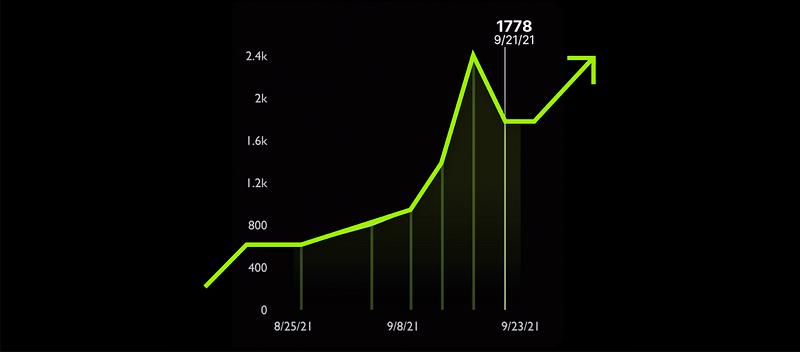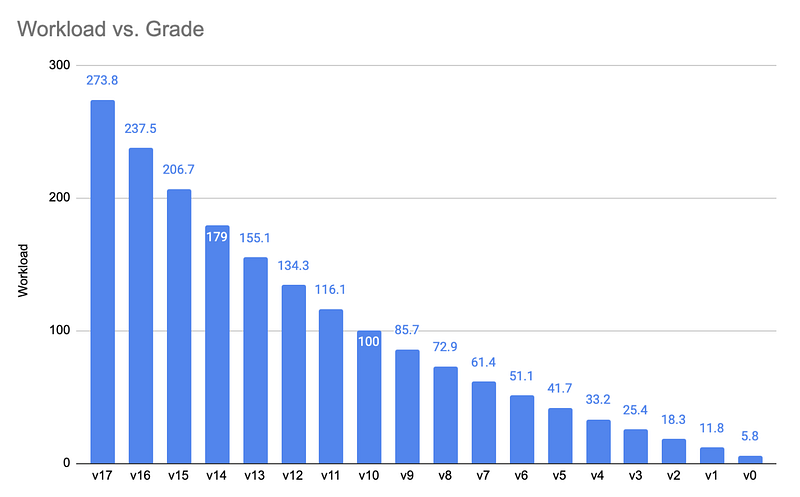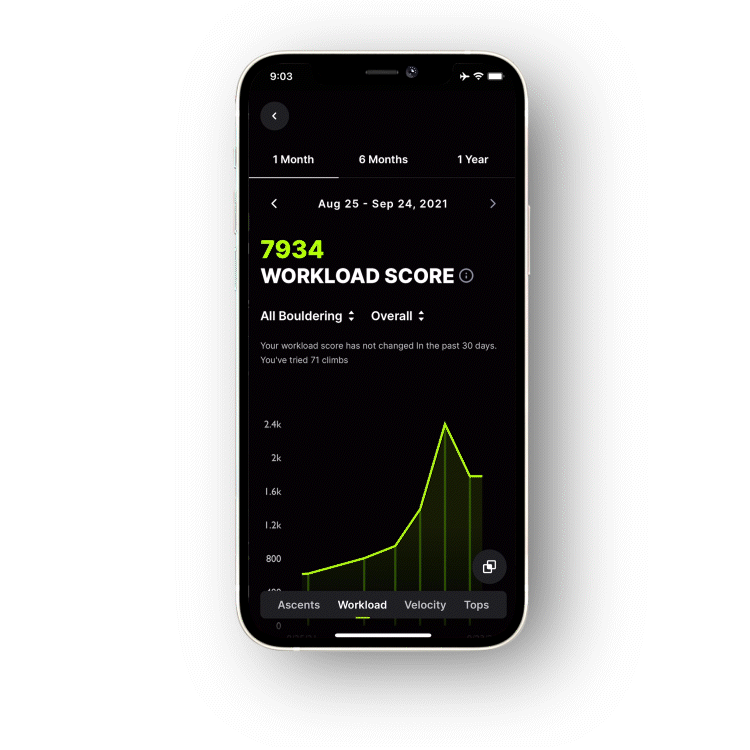What is it, how it’s calculated, and how to use it.

What is Workload?
Workload is a combination of your volume and intensity when climbing. An increase in average workload (over the course of 3+ sessions) means you’ve increased the total volume or intensity of the session. Workload allows climbers to intentionally build fitness and induce peak performances.

How is Workload Calculated?
Workload is calculated by summing the total number of attempts and sends on a climb. That total is then multiplied by KAYA’s weighted score for each climb. We use the weighted score to measure the metabolic demands of climbing at a certain level in relation to your Hard level, which is based on your rolling 3 month Hard send level.
A single send at your Hard Intensity band is worth 100 points. The weighted point value increases or decreases exponentially for harder or easier climbs. This is because the metabolic demands of climbing at a certain level increases or decreases exponentially as you approach your limit [CITE: Dave Giles Critical Force in Climbing & Springer]. For example, see the chart below showing the point per boulder problem for a V10 boulderer.
Attempts are also counted towards Workload, with each attempt worth 80% of the Workload Score of a send at that grade.
Total Workload Score for a time period is the sum of all the work points earned by your sends during that time period plus the sum of all of the work points earned by your attempts.

Due to the physiology of muscle power output, grade weighting drops off exponentially rather than linearly.

How do I use Workload to track Fitness Capacity?
Average Workload per session, when tracked across a sufficiently large number of sessions, is a way to quantify your capacity for work. Changes in average Workload per session then correspond to changes in your physical capacity for work. Think of it as a metric telling you the size of your gas tank.
Just like a larger gas tank will let you cover more miles or go faster per tank, increases in work capacity mean you can do more climbing or more hard climbing in a session than before.
Once capacity is understood and established, this same metric can be intentionally leveraged to induce periods of peak performance.
- Increasing workload gradually across a sufficiently long period of time leads to increases in fitness.
- Temporarily decreasing workload allows your body to recover and, when applied correctly, can result in a performance peak.
This same method is how elite climbers prepare for important events or trips. Their training consists of a long, gradual building of work capacity interspersed with intentional rest. Then a sudden decrease in workload right before a targeted event results in peak performances.
How do I Interpret Workload over time?
Long term changes in average session workload mean you’re accumulating more total climbing capacity. This is very indicative of increased fitness and total work capacity per session. Decreases in average workload can be interpreted as either a decrease in total work capacity (your gas tank is now smaller), or hopefully, is simply a reflection of a shift from a training phase to a performance or recovery phase.






